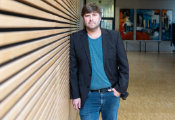Team Led by Bangladeshi Scientist Achieves Breakthrough in Quantum Physics
Scientists at Princeton University, led by Bangladeshi researcher M. Zahid Hasan, have marked a significant milestone in quantum physics. This achievement, documented in the Nature Physics journal on 20 February, showcases the observation of long-range quantum coherence at relatively high temperatures. This advancement is crucial for the development of next-generation technologies, including super-fast computers and ultra-secure communication networks, which until now have been hindered by the need for extremely low temperatures to achieve this state.
Quantum coherence, to put it simply, is akin to a spinning coin that's both heads and tails at the same moment. This phenomenon, a cornerstone of quantum mechanics, allows objects to exist in multiple states simultaneously—a feature that is impossible in the everyday world we perceive. It's the gateway to exploiting the strange and powerful properties of the quantum world, such as superposition and entanglement, which are essential for the quantum technologies of the future.
Their research discovered a new material, bismuth bromide, a type of topological insulator that can maintain quantum coherence at higher temperatures than ever before. Topological insulators, materials that conduct electricity only on their surface while remaining insulating inside, have been at the forefront of quantum physics research for over a decade. Bismuth bromide (α-Bi4Br4) is notable for its ability to maintain quantum coherence over long distances and at temperatures significantly higher than the near-absolute zero conditions usually required for such phenomena.
The significance of this discovery lies in its potential applications in quantum computing and energy-efficient electronics. Quantum coherence is essential for the superposition and entanglement of quantum states, which are critical for the operation of quantum computers. Traditional electronics, which rely on the flow of electrical charge, could be vastly improved or even replaced by spin-based devices that utilise the quantum properties of electrons, offering higher efficiency and reduced energy consumption.
The research, a culmination of more than 15 years of work at Princeton, utilises Aharonov-Bohm interference to demonstrate the quantum effects. This phenomenon, where electrons maintain a coherent phase across different paths, underscores the potential for topological insulators to function in real-world conditions, overcoming previous limitations posed by temperature and coherence length.
Professor Hasan's team, in collaboration with researchers from various institutions, including the University of Zurich and the Beijing Institute of Technology, has paved the way for advancements in topological quantum physics and engineering. Their work not only highlights the robustness of topological circuits against defects and impurities but also opens new avenues for exploring quantum information science.
M. Zahid Hasan, whose academic journey began in Dhaka, Bangladesh, has established himself as a leading figure in the exploration of quantum phenomena. His postdoctoral work and academic appointments have seen him contribute significantly to the fields of topological quantum matter and advanced spectroscopy, leading to his current position at Princeton University where he heads the Laboratory for Topological Quantum Matter and Advanced Spectroscopy.
In addition to his work at Princeton, Hasan serves as a Visiting Faculty Scientist at Lawrence Berkeley National Laboratory in California and has been recognised as an EPiQS-Moore Investigator by the Betty and Gordon Moore Foundation for his research into emergent quantum phenomena in topological materials.




































